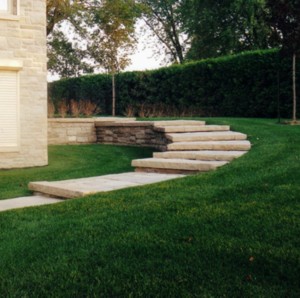
I am sure that most of us appreciate the lack of slip & slide snow days in Southern Ontario. The plus side... less fender benders, less slip and fall law suits, municipal budgets save a large amount of money from not having to provide snow clearing... and the environment benefits from having less salt dumped on it.
I received an email yesterday asking, "Is there a downside to all this?"
(Picture: Last year's easy winter produced massive amounts of blooms on the Hydrangea shrubs I planted in 2004)
Trees and shrubs are the unseen victims that suffer the effects of a mild winter. Nature has a built in response to the usual season flow. In early fall, when the days get shorter and nights get cooler, the plants are signalled to begin winter dormancy. Nutrient production in most trees and shrubs slow and eventually stop all together. Leaves fall off and the plants go to sleep.
On a micro-scale, the cells that normally carry water & nutrients stop their function so that when the freezing weather hits, the cells do not freeze and become damaged (like water pipes at the cottage). Deep-freeze and frosts that would normally harm plants have very little effect because of this dormancy protection.
So what happens in a mild winter situation?
The plants begin normal shutdown in fall for winter dormancy, but warm spouts in the middle of winter can cause a reversing of the dormancy. Suddenly sugars and nutrients start to flow which sends growth signals to the buds. Then a frost happens, or worse, a deep freeze occurs!
What began to wake and grow in the plant is now killed off and will be revealed in the start of Spring. You may notice the previous season's growth will die back and the plant starts it's new growth from further in along the branch structure. Some of the more marginal plants that are growing in the limit of their hardiness zone may fold and perish all together.
It's a gamble... Toronto rides a turbulent hardiness zone 6, a deep freeze arctic low can bring zone 5 conditions, a mild winter can raise it to zone 7 conditions.
Winters like this may cause a hit or miss situation where some plants will flourish and double in size during the next growing season, some may die back (as mentioned), some may not produce many blooms or fruits for the next season and yet.... some may bloom like crazy!

















